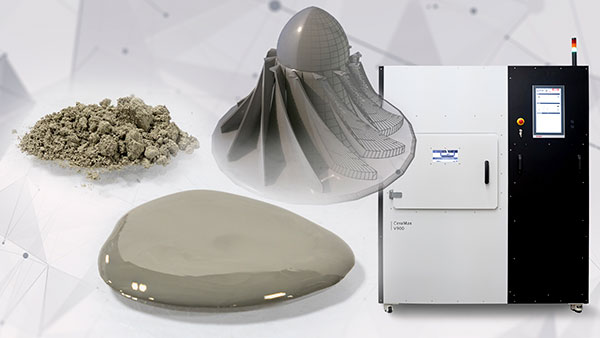Lithoz and Oak Ridge National Laboratory Team Up to Advance Ceramics
Technical collaboration agreement will focus on innovating high-temperature ceramics processing viathe use of Lithoz 3D printing technology.

The goal of the cooperative agreement is development of the technology to shape non-oxide ceramics with high-refractive indexes. Image courtesy of Lithoz.
Latest News
December 5, 2023
Lithoz GmbH and the U.S. Department of Energy’s (DOE) Oak Ridge National Laboratory have signed a Cooperative Research and Development Agreement (CRADA) to use Lithoz’s 3D printing technology to explore the processing and additive manufacturing of non-oxide ceramics.
Based on laaser-induced slipcasting (LIS) technology, the Lithoz 3D printer uses laser slurry drying, or net shaping, technology to guide computer-controlled light amplification by stimulated emission of radiation that desiccate liquid-suspended controlled layers of solids.The goal of the cooperative agreement is development of the technology to shape non-oxide ceramics with high-refractive indexes, such as silicon carbide, for use in extreme temperature applications.
Lithoz recently launched its LIS technology to produce parts that are more complex in geometry and larger in scale than can be achieved using conventional moulding techniques. By incorporating intricate inner channels and 3D-printable complex designs, the parts it can produce are lighter and more efficient when compared with current methods. This technology is also capable of increasing the range of materials that can be printed by processing dark ceramics, such as silicon carbide and silicon nitride.
The goal of this project is to scale up the production of high temperature ceramic parts to an industrial level.The team wil llook to develop this technology by assessing its technical capabilities using a common oxide-ceramic material. This will involve printing and debinding the primary material—such as silicon nitride and silicon carbide, two substances for aerospace applications—from the moulded component. Using heat, the substance will be formed into a solid material in a process known as sintering. The performance and properties of the printed materials will then be tested.
“This project will build on ORNL’s years of research indevelopingand testinghigh-temperature materials and ceramics,” says Corson Cramer, Extreme Environment Materials Processing Group staff scientist at ORNL.“By combining our expertise with Lithoz 3D printing capabilities, we have the potential to change the concept of high-temperature ceramics processing for heat exchange, aerospace and defense applications.”
Sources: Press materials received from the company and additional information gleaned from the company’s website.
Subscribe to our FREE magazine, FREE email newsletters or both!
Latest News
About the Author
DE’s editors contribute news and new product announcements to Digital Engineering.
Press releases may be sent to them via [email protected].






